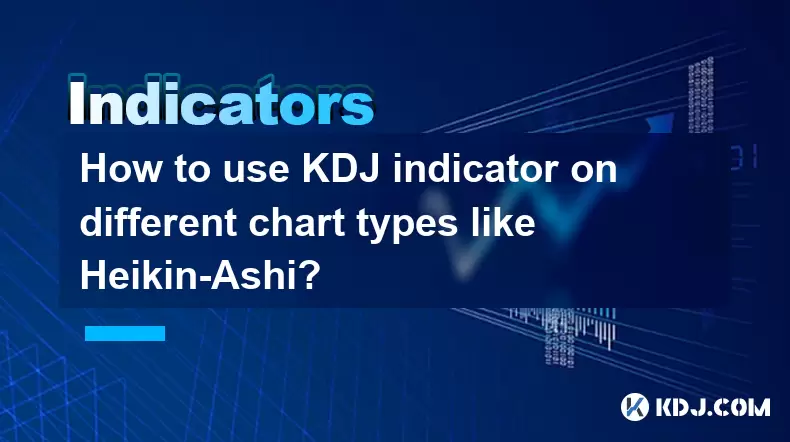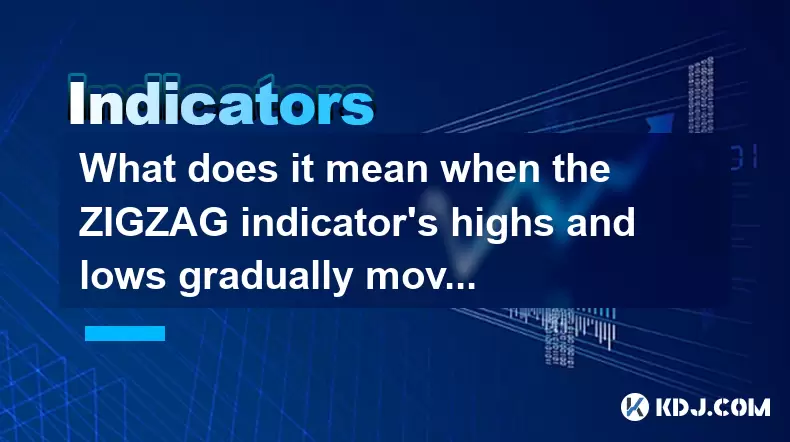-
 Bitcoin
Bitcoin $116600
0.12% -
 Ethereum
Ethereum $4259
5.24% -
 XRP
XRP $3.269
-0.80% -
 Tether USDt
Tether USDt $1.000
0.00% -
 BNB
BNB $805.6
1.49% -
 Solana
Solana $182.0
2.27% -
 USDC
USDC $0.9999
0.01% -
 Dogecoin
Dogecoin $0.2433
6.92% -
 TRON
TRON $0.3361
-0.83% -
 Cardano
Cardano $0.8176
2.77% -
 Hyperliquid
Hyperliquid $43.93
7.66% -
 Chainlink
Chainlink $21.35
9.11% -
 Stellar
Stellar $0.4516
-0.51% -
 Sui
Sui $3.953
2.85% -
 Bitcoin Cash
Bitcoin Cash $572.6
-2.63% -
 Hedera
Hedera $0.2665
1.63% -
 Avalanche
Avalanche $24.50
3.23% -
 Ethena USDe
Ethena USDe $1.001
0.01% -
 Litecoin
Litecoin $121.7
-3.25% -
 Toncoin
Toncoin $3.420
2.01% -
 UNUS SED LEO
UNUS SED LEO $9.006
0.22% -
 Shiba Inu
Shiba Inu $0.00001387
4.90% -
 Uniswap
Uniswap $10.99
-0.28% -
 Polkadot
Polkadot $4.134
4.21% -
 Dai
Dai $1.000
0.00% -
 Pepe
Pepe $0.00001243
4.80% -
 Bitget Token
Bitget Token $4.509
0.19% -
 Cronos
Cronos $0.1576
2.00% -
 Monero
Monero $275.8
1.20% -
 Ethena
Ethena $0.7594
15.99%
How to use KDJ indicator on different chart types like Heikin-Ashi?
The KDJ indicator on Heikin-Ashi charts helps filter noise in crypto markets, offering clearer signals for trend reversals when %K crosses %D in oversold/overbought zones.
Aug 06, 2025 at 03:29 am

Understanding the KDJ Indicator in Cryptocurrency Trading
The KDJ indicator is a momentum oscillator widely used in cryptocurrency trading to identify overbought and oversold conditions. It is an extension of the Stochastic Oscillator, incorporating a third line called the J line, which provides additional insight into price momentum. The KDJ consists of three components: the %K line, the %D line (signal line), and the %J line. These lines fluctuate between 0 and 100, with values above 80 typically indicating overbought conditions and values below 20 signaling oversold levels. In the context of crypto markets, where volatility is high, the KDJ can help traders time entries and exits more effectively.
When applied correctly, the KDJ helps detect potential reversal points. For instance, when the %K line crosses above the %D line in the oversold zone, it may suggest a bullish reversal. Conversely, a %K line crossing below the %D line in the overbought region might indicate a bearish shift. The J line, being more sensitive, often acts as an early warning signal for sharp price movements. Traders should remain cautious, as false signals can occur during strong trending phases.
Heikin-Ashi Charts: A Smoother Alternative to Candlesticks
Heikin-Ashi charts are a modified version of traditional Japanese candlesticks, designed to filter out market noise and provide a clearer view of trends. Unlike standard candlesticks, which use open, high, low, and close (OHLC) prices, Heikin-Ashi candles are calculated using averaged price data. The formulas are as follows:
- HA Close = (Open + High + Low + Close) / 4
- HA Open = (Previous HA Open + Previous HA Close) / 2
- HA High = Maximum of High, HA Open, HA Close
- HA Low = Minimum of Low, HA Open, HA Close
This smoothing effect reduces the number of wicks and small candles, making it easier to identify sustained trends. In cryptocurrency trading, where price swings can be erratic, Heikin-Ashi charts help traders avoid premature exits during minor pullbacks. However, because the data is derived from past values, Heikin-Ashi introduces a lag, which must be considered when combining it with indicators like KDJ.
Applying KDJ on Heikin-Ashi Charts: Step-by-Step Setup
To use the KDJ indicator on Heikin-Ashi charts, follow these steps within your trading platform (e.g., TradingView, MetaTrader, or Binance):
- Ensure your chart is set to Heikin-Ashi mode. This is usually found in the chart type dropdown menu.
- Add the KDJ indicator from the indicator library. If not available by default, you may need to install a custom script.
- Configure the KDJ settings: the default periods are typically 9 for %K, 3 for %D, and a smoothing factor of 3.
- Verify that the KDJ is calculating based on the Heikin-Ashi close prices, not the original candle close.
- Adjust the overbought and oversold thresholds to 80 and 20, respectively, for clearer signal identification.
Some platforms automatically adapt indicators to the current chart type, while others may require manual scripting to ensure the KDJ uses Heikin-Ashi values. In cases where the standard KDJ uses raw price data, you may need to modify the source input to “Heikin-Ashi Close” or use a Pine Script that explicitly references HA prices.
Interpreting KDJ Signals on Heikin-Ashi Charts
When using KDJ on Heikin-Ashi charts, the interpretation of signals benefits from the reduced noise. A bullish signal occurs when the %K line crosses above the %D line while both are below 20, and the Heikin-Ashi candles begin forming green bodies with small or no lower wicks. This combination suggests a strong uptrend is emerging. Conversely, a bearish signal appears when the %K line crosses below the %D line above 80, coinciding with red Heikin-Ashi candles and minimal upper wicks.
The J line plays a critical role in confirming momentum. If the J line spikes above 100, it indicates extreme bullish momentum, which could precede a pullback even if the trend remains up. Similarly, a J line plunging below 0 signals oversold conditions with strong bearish momentum. Because Heikin-Ashi charts smooth price action, divergence between the KDJ and price becomes more reliable. For example, if the price makes a higher high but the KDJ forms a lower high, this bearish divergence may foreshadow a reversal.
Comparing KDJ Performance Across Chart Types
The behavior of the KDJ indicator varies significantly across different chart types. On standard candlestick charts, the KDJ reacts quickly to price changes, often generating frequent signals—some of which may be false due to market noise. In contrast, on Heikin-Ashi charts, the KDJ produces fewer but higher-quality signals due to the filtered price data. This makes it particularly useful in ranging or mildly trending crypto markets.
On Renko charts, which are based on price movement rather than time, the KDJ can become less responsive because the chart updates only when a predefined price box is filled. This may delay signal generation. On line charts, which use only closing prices, the KDJ will still function but may miss intraday volatility crucial in crypto trading. Therefore, Heikin-Ashi offers a balanced middle ground—retaining time-based structure while minimizing noise.
Common Pitfalls and Best Practices
Traders often make the mistake of applying the KDJ without verifying the data source. If the indicator uses standard close prices while the chart displays Heikin-Ashi, the signals will not align. Always confirm the KDJ is referencing Heikin-Ashi Close. Another common error is ignoring the lag inherent in Heikin-Ashi calculations, which can cause delayed entries.
It is advisable to combine the KDJ with other tools such as volume indicators or moving averages to confirm signals. For instance, a KDJ crossover in the oversold zone accompanied by rising volume increases the likelihood of a genuine reversal. Avoid trading KDJ signals during major news events or low-liquidity periods, as crypto markets can exhibit erratic behavior that invalidates technical patterns.
Frequently Asked Questions
Can I use KDJ on Heikin-Ashi in automated trading bots?
Yes, but the bot must be programmed to read Heikin-Ashi close prices for the KDJ calculation. Standard bot templates may use raw candle data, so custom scripting is often required to ensure compatibility.
Does the KDJ lag more on Heikin-Ashi than on regular candles?
Yes, because Heikin-Ashi itself is a lagging calculation, and the KDJ adds another layer of smoothing. This double smoothing can delay signals, especially in fast-moving crypto markets.
How do I adjust KDJ settings for different crypto timeframes?
For shorter timeframes like 5-minute charts, reduce the %K period to 5 or 7 to increase sensitivity. On daily charts, use the default 9-period setting or increase it to 14 for more stable signals.
Is the J line reliable on Heikin-Ashi charts?
The J line remains a valid momentum gauge, but its extreme values (above 100 or below 0) should be interpreted cautiously. On Heikin-Ashi, such spikes often reflect strong momentum but may not always lead to immediate reversals.
Disclaimer:info@kdj.com
The information provided is not trading advice. kdj.com does not assume any responsibility for any investments made based on the information provided in this article. Cryptocurrencies are highly volatile and it is highly recommended that you invest with caution after thorough research!
If you believe that the content used on this website infringes your copyright, please contact us immediately (info@kdj.com) and we will delete it promptly.
- Solana Meme Coin Presales: Hype or the Next Big Thing?
- 2025-08-10 02:50:12
- Pi Network, Altcoin Season, and Breakout Tokens: What's Hot in 2025?
- 2025-08-10 02:50:12
- Decoding Crypto Presales: Is Cold Wallet the New Neo Pepe?
- 2025-08-10 02:30:12
- PEPE's Moonshot Ambitions: Will the Memecoin Rally Continue?
- 2025-08-10 03:50:11
- Dogecoin, ROI, and the Meme Coin Mania: Is Little Pepe the Next Big Thing?
- 2025-08-10 03:50:11
- Cryptos, 2025, Market Caps: Riding the Next Wave
- 2025-08-10 02:30:12
Related knowledge

What does it mean when the price is trading above the SAR indicator but the red dots are densely packed?
Aug 09,2025 at 11:49pm
Understanding the SAR Indicator and Its Visual SignalsThe SAR (Parabolic Stop and Reverse) indicator is a technical analysis tool used primarily to de...

What does it mean when the MACD histogram continues to shorten but the price reaches a new high?
Aug 09,2025 at 09:29pm
Understanding the MACD Histogram and Its ComponentsThe MACD (Moving Average Convergence Divergence) indicator is a widely used technical analysis tool...

What does it mean when the Triple Moving Average (TRIX) turns downward but the price doesn't fall?
Aug 09,2025 at 12:42pm
Understanding the Triple Moving Average (TRIX) IndicatorThe Triple Moving Average, commonly known as TRIX, is a momentum oscillator designed to filter...

What does it mean when the 10-day and 30-day moving averages repeatedly intertwine?
Aug 10,2025 at 02:42am
Understanding Moving Averages in Cryptocurrency TradingMoving averages are among the most widely used technical indicators in the cryptocurrency tradi...

What does it mean when the CCI indicator continues to hover below -100?
Aug 10,2025 at 04:21am
Understanding the CCI Indicator and Its Baseline ValuesThe Commodity Channel Index (CCI) is a momentum-based oscillator used in technical analysis to ...

What does it mean when the ZIGZAG indicator's highs and lows gradually move downwards?
Aug 10,2025 at 02:14am
Understanding the ZIGZAG Indicator in Cryptocurrency TradingThe ZIGZAG indicator is a popular technical analysis tool used by cryptocurrency traders t...

What does it mean when the price is trading above the SAR indicator but the red dots are densely packed?
Aug 09,2025 at 11:49pm
Understanding the SAR Indicator and Its Visual SignalsThe SAR (Parabolic Stop and Reverse) indicator is a technical analysis tool used primarily to de...

What does it mean when the MACD histogram continues to shorten but the price reaches a new high?
Aug 09,2025 at 09:29pm
Understanding the MACD Histogram and Its ComponentsThe MACD (Moving Average Convergence Divergence) indicator is a widely used technical analysis tool...

What does it mean when the Triple Moving Average (TRIX) turns downward but the price doesn't fall?
Aug 09,2025 at 12:42pm
Understanding the Triple Moving Average (TRIX) IndicatorThe Triple Moving Average, commonly known as TRIX, is a momentum oscillator designed to filter...

What does it mean when the 10-day and 30-day moving averages repeatedly intertwine?
Aug 10,2025 at 02:42am
Understanding Moving Averages in Cryptocurrency TradingMoving averages are among the most widely used technical indicators in the cryptocurrency tradi...

What does it mean when the CCI indicator continues to hover below -100?
Aug 10,2025 at 04:21am
Understanding the CCI Indicator and Its Baseline ValuesThe Commodity Channel Index (CCI) is a momentum-based oscillator used in technical analysis to ...

What does it mean when the ZIGZAG indicator's highs and lows gradually move downwards?
Aug 10,2025 at 02:14am
Understanding the ZIGZAG Indicator in Cryptocurrency TradingThe ZIGZAG indicator is a popular technical analysis tool used by cryptocurrency traders t...
See all articles

























































































